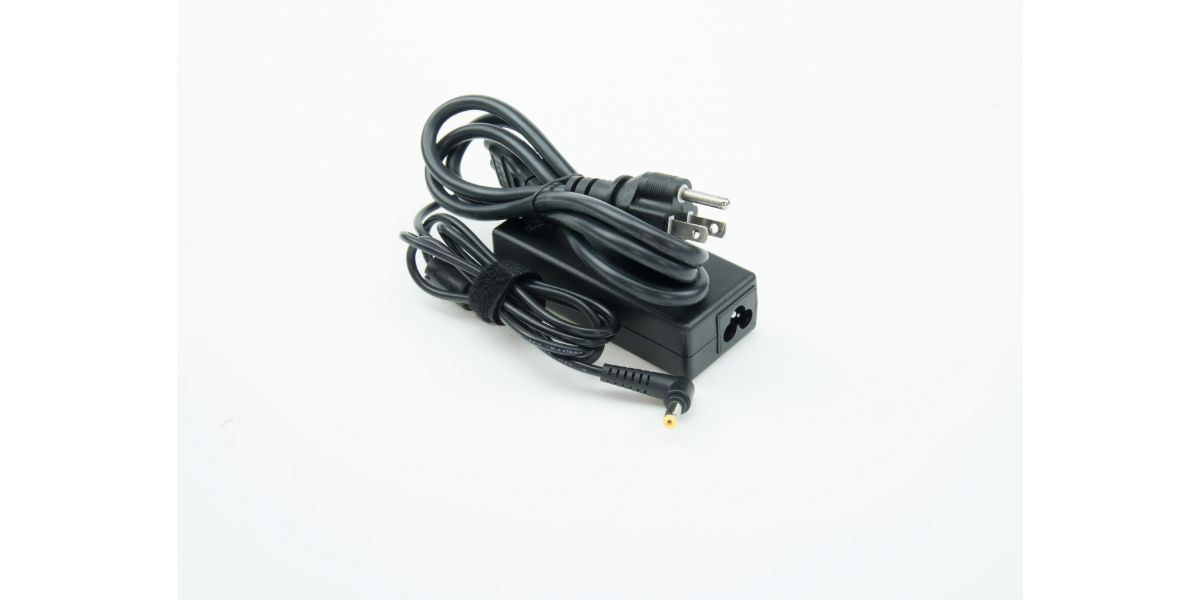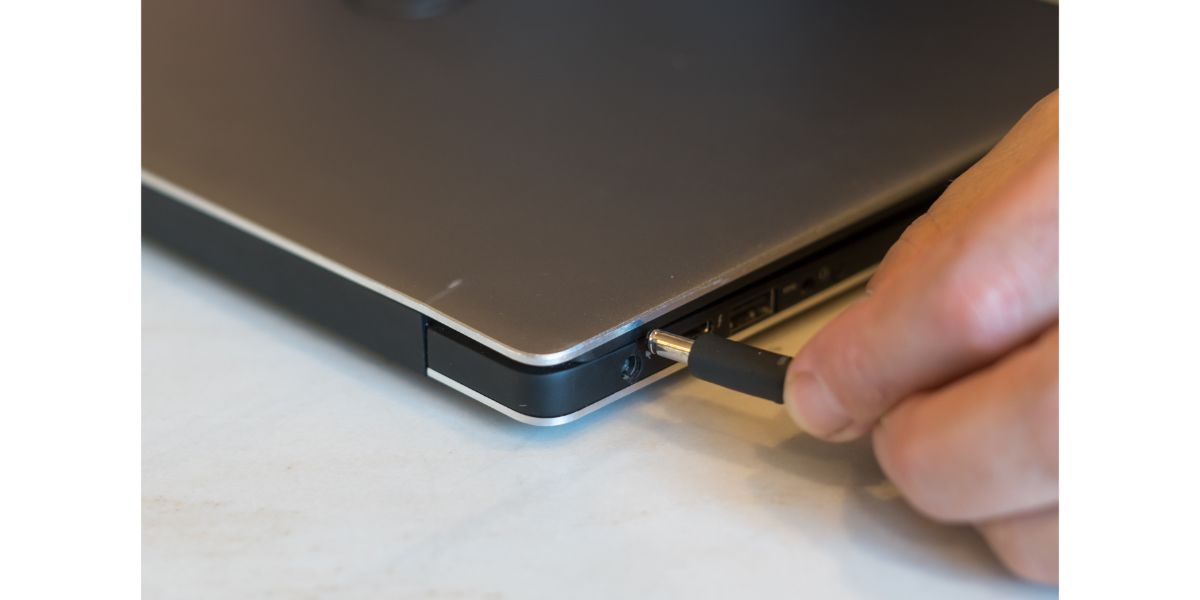Disclaimer: This post may contain affiliate links, meaning we get a small commission if you make a purchase through our links, at no cost to you. For more information, please visit our Disclaimer Page.
Dell makes consumer technologies that rely on AC adapters to charge, power, and run. Whether your device is new or old, you may encounter an “AC Adapter Not Recognized” error when plugging it into AC power. Is it possible to fix this issue?
To fix an “AC adapter not recognized” issue on your Dell device, inspect your power cable for signs of damage or clean your device’s DC port. Make sure your AC power supply isn’t faulty. Damaged DC ports or faulty AC adapters need replacement or repairs from an authorized service center.
It can be distressing when a device does not recognize its power source, but with some patience and a systematic approach, you should be able to resolve the issue. Read on to learn more about troubleshooting your Dell AC adapter to keep your device running again.
Table of Contents
1. Inspect Your Power Cable
Start by unplugging everything and inspecting the cable you plug into the wall. By doing so, you are restarting your power supply system and resetting it back to its original state. This allows your device to identify the AC adapter that was previously unrecognized.
The power supply, also referred to as the AC transformer, is a brick-like device that is vital for any electronic device. It converts standard outlet power into a voltage and current suitable for your device.
Check the power cable for exposed wires, chafing, and other signs of damage. The plug should not have bent pins, and the power supply end should be clean and undamaged. Keep an eye out for any frayed insulation on the wire itself, and ensure all connections are tight and secure.
Important Notes on Power Cables
Not all Dell devices will have a power cable. Some models have an AC adapter that resembles a phone charger preceding the additional connector. In this case, you can only inspect the pins to ensure they are not deformed.
Although your power cable may look perfectly fine on the outside, internal damage could prevent your AC adapter from working. This type of damage can occur due to incorrect use or wear and tear over time.
If you identify damage to the power cable, replace it immediately. Getting a replacement cable should solve the “AC Adapter Not Recognized” issue if nothing else is wrong with your adapter. In worst-case scenarios, using an unreliable power cable can lead to irreparable damage to your device.
2. Inspect Your AC Power Supply
The AC power supply is the most critical component in the whole setup. Its job is to convert high-voltage alternating current household electricity to a more battery-friendly DC voltage, typically up to 20 volts.
To inspect your power supply, look for any obvious signs of damage. Cracks in the housing can indicate a hard drop or fall. Deformed cables can result from overheating. Replace the power supply if you notice any signs of severe or obvious damage.
Check the pins for the power cable to ensure they are undamaged and free of corrosion. If the pins are corroded, you’ll notice a powdery white substance forming on their surface. Pins with corrosion can mean you have water damage, so it is recommended that you replace the AC adapter.
Don’t Forget the Adapter’s Cable
In most cases, the cable that delivers power from the AC adapter to your device is integrated into the power brick. They take a lot of abuse over time, with some people carelessly trampling on them or rolling over them with office chairs.
The same principles apply here as when you inspected the power supply cable. Check the adapter cable for signs of obvious damage or deformation. Also, examine the DC plug on the end. It may not work as intended if it has been crushed or damaged.
A visually acceptable cable can have internal damage leading to poor performance. Even if the insulation is intact, a faulty wire or connection within the insulation could create power problems.
If you notice any damage to the cable or its DC plug, you must replace the entire AC adapter. Since the cable and DC plug are integrated into the power supply, you cannot replace them separately. Trying to modify your AC adapter by replacing parts can cause further issues, including damage to your device.
3. Check Your Device’s DC Port
If you are getting an “AC Adapter Not Recognized” error, another possible cause for this is a faulty DC port. This is where the adapter is plugged into your device and is another common point of failure.
Check the DC port for any obvious signs of damage. It’s normal to find cracks around a broken DC port, and you may also notice that the pin inside the device is bent. You may also find dirt or debris, such as lint from your laptop bag, inside the DC port, which will interfere with its operation.
If you find gunk in your DC port, do the following:
- Power off your device.
- If your device has a removable battery, take it out.
- Use a small, non-metallic tool, such as a toothpick or a cable tie, to clean out your DC port.
Once you are satisfied that your DC port is clean, you might find that everything works as intended. If not, you may have another problem.
Why Damaged DC Ports Are Not Candidates for Home Repair
A damaged DC isn’t an issue that you should fix on your own. Furthermore, physical damage of this kind is not typically covered by the device’s warranty. You must take your device to an authorized repair center.
Misuse of the device is the most common cause of damaged DC ports. Careless users will rest their AC adapters on soft surfaces like beds or couches that flex underneath the device. Doing so causes the DC plug to bend and sometimes even break free internally.
A device with a damaged DC port might work fine for a long time before finally giving up. Over time, the damage worsens due to poor alignment, loose connections, and excess heat generated by the faulty connection to the point that it eventually stops working.
4. Plug Your AC Adapter Back In and Check for Light
If you are sure that your adapter and device have no signs of external damage, it’s time to plug your AC adapter back in to check if it is receiving power.
If your AC adapter is in good working order, the built-in light should illuminate solid green when connected to an outlet. If the light is not present or flashing, it is a sign of an internal fault.
No Light Indicates Power Supply Issues
If there’s no light at all, it can mean that the power supply cable, the one between the outlet and the AC adapter, is broken.
You can try a different power cable if you have one available to confirm. Due to the popularity of Dell devices, it shouldn’t be too difficult to borrow one from a friend or coworker to verify.
If the light still doesn’t illuminate with a known working power cable, your AC adapter has completely failed, and you will have to replace it.
A Flashing Light Indicates an Internal Fault
If the light on your Dell adapter is blinking, it has detected an internal fault and activated its internal safety circuit.
You can try a different power cable to verify the issue, but most of the time, if you see a flashing light on your AC adapter, you need to replace it.
A Solid Green Light Means Your Adapter Is Functional
A solid green light is what you should hope to see. It indicates that the AC adapter is operating normally.
However, even if the solid green light is present, there may still be internal damage to the adapter’s DC cable. While you might think your AC adapter is working normally, it’s still possible that the power isn’t getting through to your device.
If you only have one AC adapter, you can check the DC plug for output with a multimeter to ensure it delivers the rated power and current.
Alternatively, you can use your AC adapter to charge a different device. If it works with another device but not with yours, this might mean that you have a defective device or an incompatible adapter.
5. Make Sure You Have the Right Adapter for Your Device
Dell has manufactured various laptops and devices, each with its unique adapter. Some adapters might look similar down to the DC plug, but this does not mean they are identical. Dell’s various laptop models come with different wattage requirements, so using the wrong adapter can cause damage to your device.
Consult your device’s user manual by looking it up on Dell’s website. You can search for the model number to find your user manual. In the manual, look for “AC Adapter Specifications” and compare them to the specifications stamped on your AC adapter to verify that you have the right adapter for your device.
You might find that you mistakenly took your coworker’s superficially identical adapter home and that it is incompatible with your device. It can also happen if you don’t do enough research before buying a new AC adapter or using a universal replacement adapter.
6. Replace Your AC Adapter
If you have made it this far, there’s a good chance that your only option is to get a new AC adapter. There are a few things to keep in mind if you choose to do so.
Why You Should Never Use a Universal AC Adapter
Plenty of replacement adapters available online are designed to fit just about any laptop with adjustable voltages. You can also find DC plugs with adapters of every kind. While they are almost always cheaper than the official Dell adapters, we advise that you avoid them entirely.
A universal AC adapter can damage your device by delivering the incorrect DC voltage or current, resulting in costly repairs or replacement. The manufacturer’s warranty will not cover any damage caused by an unofficial replacement AC adapter.
To get the right AC adapter for your device, consult your user manual as described in Step 5 to verify the model number and purchase one from the official Dell website.
How To Care for Your Dell AC Adapter
Whether you have to replace your adapter or you have managed to get your existing one working again, you will want to take good care of it to make sure it lasts.
Here are some tips for getting the most out of your AC adapter:
- Never rest your device on a soft surface. If you ever find a laptop with a broken or damaged DC port, you can safely assume it was left on a soft surface and subsequently sat or pressed on.
- Do not stretch or strain the cabling. There should always be a comfortable amount of slack in the cable, and it should never be bent, especially by the DC plug.
- Ensure your adapter is well-ventilated. It should never be covered or placed in a tight space. It can get quite hot, and if the heat is not allowed to dissipate, it can damage the AC adapter over time.
- Refrain from blowing or twisting the cable up tightly. Many people have the terrible habit of winding cables too tightly around their elbows or the AC power brick itself when storing them. Doing so can cause internal damage to the wires even if you are otherwise careful.
Conclusion
Your device may not recognize Dell AC adapters for many reasons, from damaged power cables to internal faults. Fortunately, these issues are easy enough to identify and fix if you follow the process described above.
Usually, unplugging and reconnecting all your devices is enough to resolve these issues. In the worst case, however, you may have to replace the adapter or send the device to an authorized center for repairs. It’s also possible that you inadvertently traded similar AC adapters with someone.



